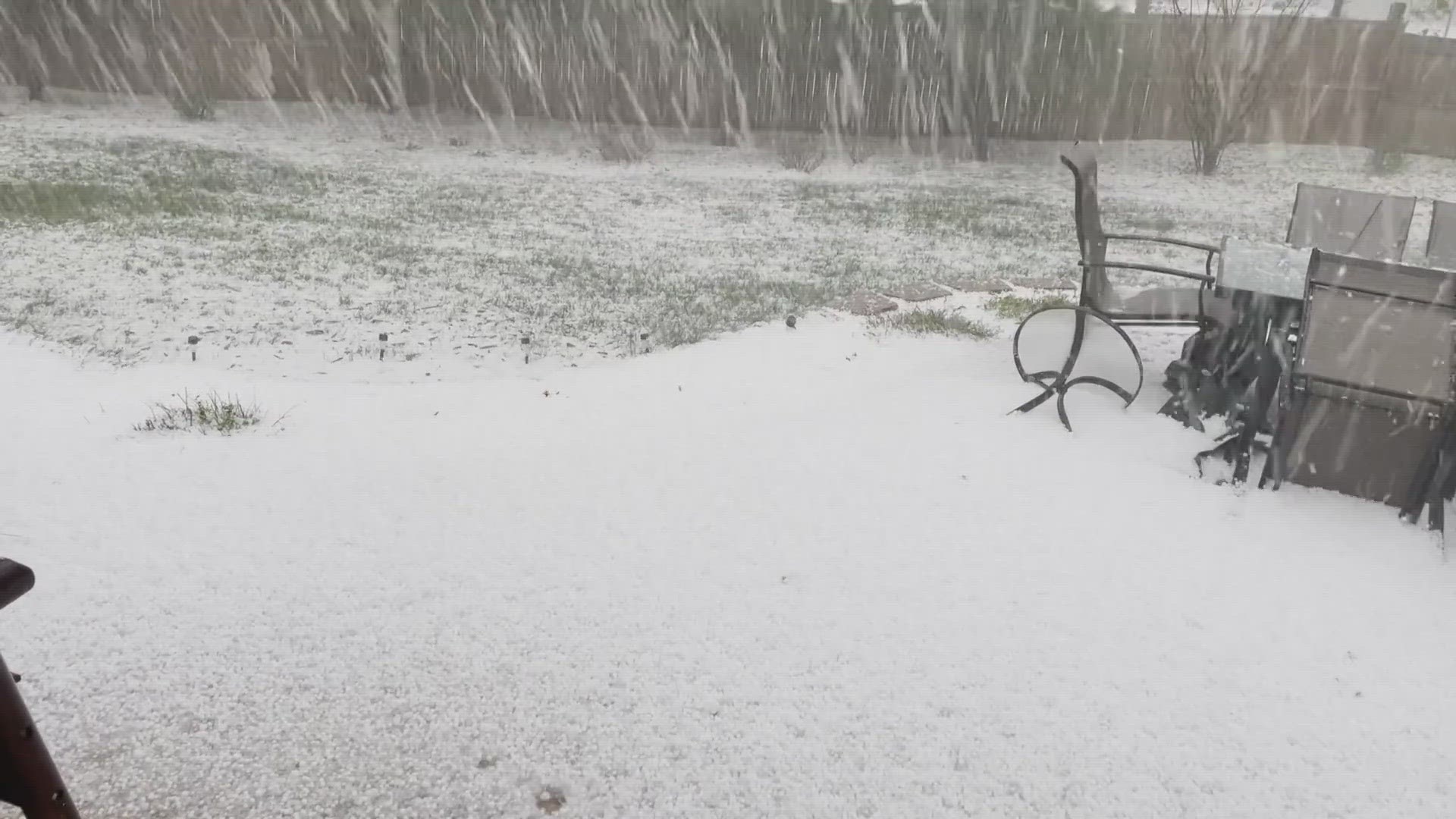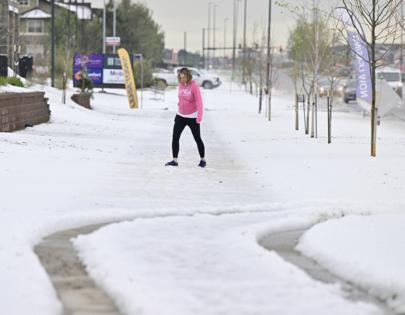Denver's Dynamic Skies: Navigating The Impact Of Hail Storms
Denver, Colorado, a city renowned for its stunning mountain backdrops and vibrant urban life, also holds a unique reputation for its often dramatic weather, particularly its severe hail storms. These powerful atmospheric events, characterized by their sudden onset and destructive potential, have become a recurring theme for residents and businesses across the Denver metro area and the wider Eastern Colorado plains. From golf-ball-sized ice missiles to baseball-sized projectiles, these storms leave a significant mark, impacting everything from daily commutes to property integrity.
Understanding the nature of these hail storms, their recent occurrences, and how to prepare for them is crucial for anyone living in or visiting this beautiful but weather-prone region. Let's delve into what makes Denver a hotspot for hail and explore the consequences of these formidable weather phenomena.
The Anatomy of Denver's Hail Storms
Denver's geographical location, nestled at the foot of the Rocky Mountains, plays a significant role in its susceptibility to severe weather. The interaction of moist air from the plains with the upslope flow from the mountains creates an ideal environment for powerful thunderstorms. These conditions often lead to the formation of large hail, as supercooled water droplets are repeatedly carried upward by strong updrafts and then fall to the ground as ice.
The National Weather Service frequently issues warnings highlighting the dangers associated with these storms. For instance, alerts often indicate hazards including "60 mph wind" and "half-dollar-sized hail." In more extreme cases, a "First Alert Weather Day" might be declared due to the "potential for large hail, potentially over 2 inches in diameter, and damaging wind gusts of 40 mph or higher." The "highest risk area is southeastern Colorado," but the Denver metro area is consistently under threat. A "quick but impactful storm whipped across Colorado on Wednesday, bringing with it hail, rain and gusty winds," showcasing the rapid development and widespread nature of these events.
Meteorologists continuously monitor these developments. For example, a severe thunderstorm was once "located near Denver International Airport, or 17 miles northeast of Denver, moving east at 20 mph (radar indicated)," underscoring the constant vigilance required to track these fast-moving systems. These storms aren't just about hail; they often bring "heavy rain and lightning," and sometimes even "funnel clouds," adding to the complexity and danger of the weather patterns.
Recent Notable Hail Events and Their Impact
The past few years have seen a series of significant hail storms that have left an indelible mark on the Denver metro area. A quick look at "a map showing all hail, wind and tornado reports near Denver, Colorado for the last six years" reveals a consistent pattern of severe weather activity.
The May 30, 2024 Storm: A Historic Impact
One of the most memorable and destructive events occurred on "May 30, 2024," when "a destructive severe thunderstorm brought baseball-sized hail and wind gusts to the Denver metro area, causing widespread damage and injuries." This particular storm was not only intense but also incredibly costly. A "federal report shows the storm that pelted the Denver metro area with baseball-sized hail was the second costliest in Colorado history."
The path of destruction from this storm was extensive, affecting multiple communities. "A severe thunderstorm dropped large hail in the Denver area in a path through Broomfield, Northglenn, Thornton, Commerce City and Aurora." The aftermath was stark: "Car after car can be seen in the Green Valley Ranch area with broken windshields and plastic tarps taped to broken windows." This visually striking damage highlighted the sheer force of the "hail as big as baseballs."
Overnight Surprises and Widespread Damage
It's not just daytime storms that cause havoc. "Overnight storms dropped golf ball sized hail in some parts of the Denver metro area pounding homes and cars as residents woke up to survey damage on Friday morning." These unannounced nocturnal assaults can be particularly jarring, leaving residents to discover the extent of the damage to their "homes and cars" only in the light of day.
The collective impact of these storms is substantial. "Severe thunderstorms delivered destructive hail, heavy rain and lightning to much of the northern and eastern Denver metro area," leading to significant financial burdens for homeowners and insurance companies alike. The "wild spring weather resulted in" numerous reports of damage, underscoring the widespread nature of these events.
Understanding Severe Thunderstorm Warnings
When the National Weather Service issues a "Severe Thunderstorm Warning," it's a call to action. These warnings are based on radar indications and ground reports, signaling that conditions are ripe for dangerous weather. For example, a warning might state that a storm is "moving east at 20 mph," indicating its trajectory and speed, allowing residents to anticipate its arrival.
Even when "Denver is under a marginal threat for severe weather," it's wise to remain vigilant. These marginal threats can still produce significant hail and damaging winds, as demonstrated by the frequent occurrences of golf-ball or half-dollar sized hail. The term "severe weather is making a comeback across the Denver metro and the northeastern plains of Colorado" often precedes periods of increased storm activity, necessitating heightened awareness.
Preparing for Future Storms
Given Denver's consistent encounter with severe weather, preparedness is not just an option but a necessity. The forecast often points to continued threats, with "The Denver metro area and eastern Colorado have the potential for severe thunderstorms again Friday, with a threat of large hail." This ongoing risk means residents must be proactive.
Here are key steps to prepare for Denver's hail storms:
- Stay Informed: Regularly check local weather forecasts from reliable sources like KDVR or the National Weather Service. Pay attention to "First Alert Weather Day" notifications and severe thunderstorm warnings.
- Protect Vehicles: Whenever possible, park cars in a garage or under a covered structure during storm threats. If no cover is available, consider using hail blankets or thick moving pads to protect your vehicle's exterior.
- Secure Outdoor Items: Bring in or tie down any outdoor furniture, trash cans, or other items that could become projectiles in high winds.
- Prepare Your Home: Ensure your roof is in good condition and gutters are clear. Consider having a professional inspect your roof periodically, especially after a major storm.
- Have an Emergency Plan: Know where to take shelter if a severe storm hits. An interior room on the lowest floor, away from windows, is generally the safest place.
- Document Property: Take photos or videos of your property before a storm, especially high-value items or areas prone to damage. This can be invaluable for insurance claims if damage occurs.
The financial toll of these storms can be immense. With storms being among the "costliest in Colorado history," having adequate insurance coverage for both home and auto is paramount. Understanding your policy and what it covers for hail damage is a crucial part of preparedness.
Conclusion
Denver's relationship with severe hail storms is an enduring one, marked by powerful natural phenomena that can bring both awe and destruction. From the sudden onset of a storm near Denver International Airport to the widespread damage caused by baseball-sized hail across the metro area, these events are a defining characteristic of life in the Mile High City. While they pose significant challenges, a combination of accurate forecasting, community awareness, and individual preparedness can help mitigate their impact. By staying informed, taking proactive measures to protect property, and understanding the risks, Denver residents can continue to navigate the dynamic skies with resilience, ensuring they are as ready as possible for whatever the Colorado weather brings next.

Pictures, video: Hail pounds much of Colorado on Wednesday | 9news.com

Large hail causes damage across Denver metro Thursday night, more

Denver weather: Quarter-sized hail pelts metro area